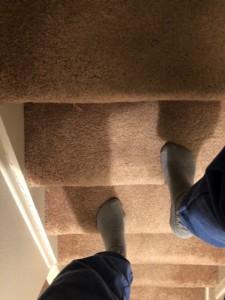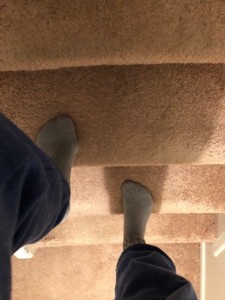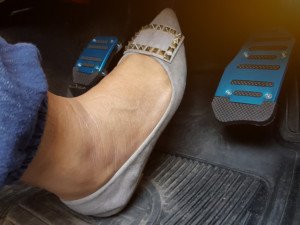
Are your calf muscles twitching?
Are you scared it’s ALS?
How can you tell this isn’t ALS?
Even if you had a negative EMG, you may still not be reassured and may be continuing to obsess about twitching calf muscles.
If you’re scared you have ALS due to twitching calf muscles, here are strength tests that, if you pass, should be of reassurance.
Are your calf muscles twitching?
Are you scared it’s ALS?
Even if you had a negative EMG, you may still not be reassured and may be continuing to obsess about twitching calf muscles.
Or, worse yet, perhaps you have no medical insurance and can’t afford to pay out-of-pocket for an EMG.
Strength tests for muscles will help tremendously in dissolving fear of ALS.
If you struggle at all but ultimately complete the exercise, do NOT let the struggling cause panic.
When I was a personal trainer I deliberately had my gym clients perform exercise routines that made them struggle.
So if there’s struggling, it’s likely because of the exercise itself, plus anxiety and being out of shape.
If a person has a pathological foot drop, that individual will not be able to perform these exercises, period. (You probably already know how a “foot drop” relates to ALS.)
This test is not about a perfect, flawless performance. It’s about completing the exercises regardless of skill level.
A person will either complete them or won’t. Never mind how long it took, how many attempts it took or how difficult it was
Calf Strength Test #1
Stand at top of staircase (or any steps), but backwards. Walk down staircase backwards and very slowly, but with each step, place only the ball of foot on the stair. Do not place hands on anything for support.

Each time you place foot on stair, hold position for three full seconds before proceeding down to next step. Expect some struggling; this requires agility.

You’ll find it easy to imagine that a person with ALS affecting calf muscles will not even be able to support their down-coming weight as they place it on the ball of their foot; these muscles control this joint action, not foot muscles.
Expect balance challenges. But if you can make it down just one stair on the ball of your foot, backwards, consider this completion of the test, even though you might lose balance on all the other stairs.
Repeat this test, because the second time won’t be as tricky.
With enough repetitions of this calf muscle strength test, you will eventually make it down every step, on the balls of your feet, holding out for three seconds, without much struggle.
There will be a learning curve and progress, something you will not be able to imagine a person with ALS affecting their calf muscles will experience.
So if progress took half the day before you finally made it down all stairs without losing balance, consider yourself successful.
Calf Strength Test #2
Jump for one minute with a rope, or if one isn’t available, move your hands and arms as though you’re holding one.

Freepik.com
A healthy person will not detect an aberration with the suspect leg; instead, the healthy person’s foot will cooperate and will have the spring of the other foot.
If you feel exhausted after one minute, this means that more aerobic exercise is in order (your heart needs more training), and hence, there’s no reason to fear ALS over this particular feature.
If your calf muscles are burning after one minute, this is normal. A person without ALS affecting calf muscles should be able to jump rope cleanly, even if the calves burn.
Calf Strength Test #3
If it’s your right calf muscle twitching, ask yourself if you had any problems driving today.

Shutterstock/Electrical Engineer
Remember, movement of the foot down against an object, such as a car pedal, is controlled by calf muscles.
The foot must continuously alternate between pressing downward and then releasing the pedal.
This may seem simple and not even seem like a strength test, but calf muscles are working to control these precise gas pedal movements.
A healthy muscle can do this, and if yours did today, don’t panic about ALS.
Calf Strength Test #4
Stand only on the foot of the calf in question. Go up on toes, still just on this foot, while the other foot is off the floor.
Stay up for 10 seconds, then release. For extra reassurance, hold the up position for 30 seconds or stand on an unstable surface.

Shutterstock/Jacob Lund
Calf Strength Test #5
Hop across the room on one foot. A person without ALS foot drop will have no problem doing this.
In addition, “I would also include walking on your heels and toes (this is a part of the neurologic exam and is used to test strength),” advises Mitzi J. Williams, MD, clinical neurologist with Morehouse School of Medicine and clinical advisor for the Multiple Sclerosis Foundation.
“If you are concerned about new neurologic symptoms, seek medical attention,” adds Dr. Williams.










































